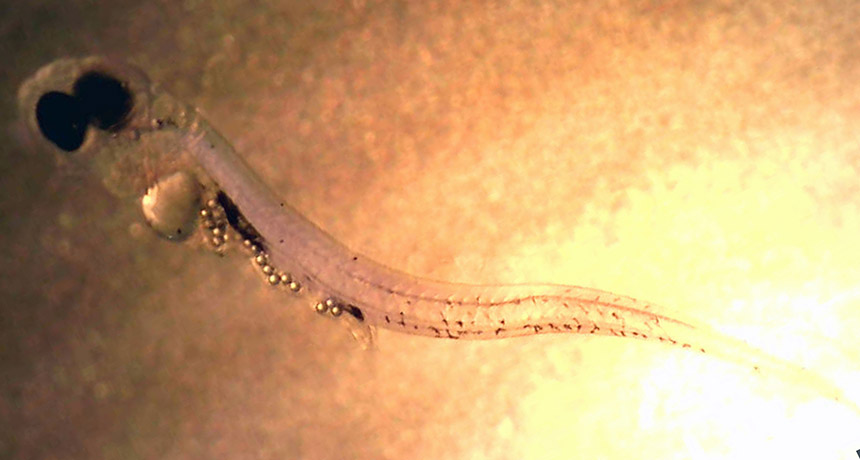Tiny plastics cause big problems for perch, lab study finds

Editor’s note: On May 3, 2017, Science retracted the study described in this article. Based on findings from a review board at Uppsala University, Science cites three reasons for pulling the study: The experiments lacked ethical approval, the original data do not appear in the paper and questions emerged about experimental methods.
Microscopic pieces of plastic rule Earth’s oceans, with numbers in the billions — possibly trillions. These tiny plastic rafts provide homes to microbes (SN: 2/20/16, p. 20), but their ecological effects remain murky.
In a lab at Uppsala University in Sweden, researchers exposed European perch (Perca fluviatilis) larvae to a microplastic called polystyrene to see how they might react. The exposure triggered a slew of potentially negative effects: Fewer eggs hatched, growth rates dropped and feeding habits changed, with some larvae preferring polystyrene to more nutritious food options. Exposed larvae were also sluggish in responding to scents that signal approaching predators in the wild, the team reports in the June 3 Science.
European perch, a keystone species in the Baltic Sea, have recently experienced a population dive. Because the drop has been linked to juvenile feeding issues, the researchers argue that microplastics could be to blame.